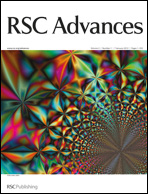Synthesis, characterization and curing properties of a novel cyclolinear phosphazene-based epoxy resin for halogen-free flame retardancy and high performance†
Abstract
A novel cyclolinear phosphazene-based epoxy resin has been synthesized through a four-step synthetic route. The curing behaviors of this epoxy resin with


 Please wait while we load your content...
Please wait while we load your content...